Colombia - Part 2 (Manizales Area)
- Mike Timmons
- Oct 21, 2023
- 21 min read
Updated: Nov 26, 2023
10/22/2023 - 10/26/2023
Sometimes, dreams come true. Mine was a simple dream. I wanted to visit the one country in the world with the most species of birds. Over 1,900 species (nearly 1/5 of the species described across the entire planet) of birds can be found in Colombia. After years of strife, ecotourism is finally skyrocketing there. So earlier this year, when I heard a friend was heading to Colombia as part of a scouting trip, I asked if I could go along. They were kind enough to allow me to travel with them, and I am forever grateful. A very large thank you to Brian and Jamie of Sabrewing Nature Tours for letting me join them. They would be scouting a photo tour of the south-central portion of Colombia. I would be living a dream. This tour would take us from the area around Cali on the western cordillera to the central cordillera area around Manizales, and finally back over to the western corillera and the town of Jardin. This post covers our time in the Manizales area.
This will be a very long post. There just was not a better way to break the trip down, and we had a lot of good birding in this area. Overall, this was my favorite area. So, feel free to skim through the pictures or buckle up and settle in for a long read. I hope you enjoy it.
This portion of the trip actually starts a bit outside Manizales. We would not arrive in Manizales until later in the day. We overnighted in Armenia and got up the next morning to hit a nearby finca. The morning was a bit of a wildcard. We were originally scheduled for elsewhere, but our guide had heard about a place that offered, among other species, a chance to photograph Red-ruffed Fruitcrow. It is a scouting trip; so, why not?
Reserva La Riviera
We made the long trek down a road outside Aremenia and pulled into a farm and were met by two guides who directed us to a blind. From there, the waiting started. Turns out, the bird was a bit hit-or-miss and did not come by on any kind of schedule. If it (and they did refer to the bird singularly) showed, it would feed quickly and leave. So, we waited some more. There were some hummingbird feeders in the area, and there were a few slices of banana out. The later attracted a couple Scrub Tanagers. Some mixed flocks moved through; the ever-present Blackburnian put in several appearances. Greenish Puffleg was the most common visitor at the hummingbird feeders. Bronzy Inca and Collared Trogon were new for the trip. All in all, it was very slow. After a few hours, the guide asked about bailing and heading to our regularly scheduled location for the day. We happily took him up on the offer.
Otun Quimbaya NP
We set off up the road and headed to La Suiza. La Suiza is a beautiful, active, little town near Otun Quibaya NP. In Periera, we had a nice lunch and then hopped in a 4x4 for the trip up into the forest. There are regular bus tours up into the forest, and we were there on a weekend; so, it was very active. It was nice to see the park get so much attention, but it was also a bit distracting. We had several targets here: Red-ruffed Fruitcorw, the endemic Cauca Guan, Torrent Duck, and White-capped Dipper. I do love dippers, but fortune did not favor us with one. We started with a stop at a bridge where the duck can sometimes be seen. There were people swimming there, and that meant no ducks. They area incredibly shy. We loaded back into the truck and moved up to the visitors' center. We had a lot more luck there.
Fruitcrow is not actually a crow. It is a member of the cotinga family. In all fairness, it does look at bit like a crow. The bird is shy, and we cautiously looked for it from the road. There were several coming in to feed in a fruiting tree. One would fly in and a minute later a bus would come by or we would advance a bit too eagerly and push the bird back into the forest. The forest was dense. In spite of my high hopes, my shots of the species looks about like every other shot I have seen. They are not textbook fieldguide poses. Odd head angles and distant, partially obscured shots are what I ended up with. Regardless, I am happy to have seen them and seen them well. They are beautiful birds.
While looking for fruitcrow, I looked up at some movement in a tree and found a huge guan staring down at me. Cauca Guan were in the same area. Despite their huge size (think small turkey), they are expert hiders. After thinking we had three or four, around a dozen ended up moving out of the area and across the road. Photos went a little better, but the birds just refused to look toward you. This bird is endemic to this area of Colombia, and seeing it was high on my list. I was glad we made the trip here to see them.
While the bird does not qualify as a specialty of the area, this is the only place we saw Southern Emerald Toucanet. It was a lifer, and I was grateful it posed for a few shots.

On the way back down, we pulled up to the area with the bridge, again. The place still looked quite busy. There were some birders on the bridge, but they were not focused on anything. With low expectations, Jamie volunteered to go check for Torrent Duck. I think I started reviewing photos or something, because I was definitely caught off guard when Jamie breathelessly popped her head back in the truck and exclaimed, "they're here!" We ran over to the bridge, but the birds were a bit distant and hanging out on the top of some rocks. We were shooting down on them; not ideal. Brian asked our guide if we could get down to where the people were swimming earlier. He said yes, and we moved down through the back of a building. The plan was to cautiously approach from behind a stand of rocks and grass blocking the ducks' sight of us. Right as I was getting into position, the ducks stood up and were on the move. Our guide had stepped out into the open. From there, it was a losing steeple chase. The ducks would bolt down one side of a rock and atop the next one up river. We quickly moved up river, but they outpaced us easily. I got a few shots snapped as they took a moment before clearing the last rock and moving entirely out of sight. Some day, I will get good shots of these birds - just not this day.
With that, the day was done, and we moved up to Manizales. We would be spending four nights at our lodging there. Tomorrow was going to be a big day, I had two hummingbirds to see.
Los Nevados NP
14,000 feet up on a volcano is not too bad of a way to start the day. Walking up a mile road at that elevation is not the way to start a day, but there we were. The guide had planned for us to do some roadside birding before heading up. The weather was beautiful, though, and we knew that would not last. The mountain makes its own weather. Well before lunch time, the clouds had rolled in. I still cannot say we made the right choice though. What you do not know can sometimes hurt you. In this case, it just caused a lot of shortness of breath. The problem was, when we got there, the road up to the visitors' center was closed. It did not open for another hour and a half. We decided to walk up. We had one very specific bird to see here, and we wanted to make sure we had plenty of time to see it. Buffy Helmetcrest is the specialty here. Honeslty, this is high altitude birding; so, there are a lot of specialties here, but the helmetcrest is "the" specialty. So, as we are hurrying (definitely more in spirit than pace) up the road, we are seeing birds like Plumbeous Sierra-Finch, White-chinned Thistletail, Brown-backed Chat-Tyrant, Andean Tit-Spinetail, and even Grass Wren (I believe it is now lumped with Sedge Wren). Veridian Metaltail is zooming about as well. I was just focused on getting to the top of the road. I was thinking I could see these birds on the way back down.
I am getting ahead of myself a little though. While we did ask our guide to skip the roadside birding in favor of getting to the helmetcrest locaton sooner, our guide did make one quick stop. It was a good one. He had a spot where Rufous-fronted Parakeet were sometimes seen. They were there, and they were even quite tame. They tolerated our presence while they fed and then flew off in a noisy flock once they had finished. I cannot say that I did a great job photographing them. I seemed to always pick the bird that had something in the way. Regardless, it was great look at some beautiful birds, and they were a lifer.
We also snapped a few shots of the volcano from here. This is the volcano (Nevado del Ruiz) that errupted in the '80s and around 23,000 people. It is still quite acitve.

Back at the top of the road to the visitors' center, we arrived to find that the building was closed. No surprise, really. We setup vigilance from a small platform outside the building and waited for the rangers to arrive. They eventually got there and informed us that the helmetcrest usually does not show for another hour. We really did not need to rush. True to their word, our first Buffy Helmetcrest showed almost exactly an hour later. This bird was a scruffy looking immature bird. I still had high hopes of seeing an adult. I seem to always have high hopes.... The bird variously fed in some tiny yellow flowers and some larger purple ones. The yellow ones did not look like they were even open, but I was told that is what they look like when they are blooming. The helmetcrest did not seem to mind. It would feed and then disappear. It would return and take a nap, feed, and then disappear. I took a lot of photos.
These photos were taken from the deck behind the visitors' center. While looking out over the flowers and waiting for the bird to return, Jamie suddenly calls out another bird from behind us. Slightly around the corner and perched up higher was a full adult male. It stayed there for what seemed like forever but did not move. I got a lot of shots of it in exactly the same position. While I would have loved more of a profile shot, I am overjoyed to have seen an adult and got this shot. I was glad Jamie spotted it and it stayed long enough for some photos.

We hung around for another hour after this. Clouds were rolling in over the mountaintops, and it was getting busy with people. We had hoped for a repeat visit by the adult, but we were not that lucky. We got back in the van and drove down to look for our next hummingbird.
Termales del Ruiz
This spot is a hotel and spa. There is a large hotspring here and it feeds a number of pools around the grounds. The place is also a great spot for birding. They have some banana feeders and hummingbird feeders setup here. It is hard not to say that everything here is a specialty. You are still pretty high up, and there are several birds here that we did not see anywhere else. Even some of the species that we saw elsewhere, we got our best looks at them, here. It is the type of place that I could have spent a couple days at. Even with all the good birds here, it is hard to ignore that this is the best place to see Rainbow-bearded Thornbill. It does not come to the feeders, though. The best place to see it? The parking lot.
So, it is already pushing lunch time when we arrived here. We are way too excited to think about eating though. There are dozens upon dozens of hummingbirds flying about. Scarlet-bellied Mountain-Tanager are flitting about the feeders, and a couple Lacrimose Mountain-Tanager had just moved through. We are shooting. Time passes, and I move down to the parking lot to look for the thornbill. No joy. I head back to the feeders. There is so much going on, it is hard to figure out where to focus. Finally, things die down a little bit. We start the "15 minutes" talk for lunch. By the time we start to head down, it is a late lunch, but it is also the perfect timing. We stepped onto the narrow path leading down to the hotel, and Jamie yells out about a hummingbird. There, feeding in a flowering tree overhanging the path is a thornbill. It darts frantically from flower to flower. It feeds by grabbing onto the plant and pretty much attacking the flower with its bill. After a few frantic moments of trying to shoot it, it flies over and perches atop a single small dried plant and takes a nap. It is a molting bird; so, the beard is not complete, but it is beautiful to see.
Mission accomplished, we can all relax now, right? Wrong. Lunch was a bit hurried, but it was for naught. The skies opened up and poured rain. We waited it out a little bit and then headed back up. There were three other hummingbirds up here that were of note. One, I just could never work out a photograph of. This would be the elusive Veridian Metaltail. It would show quickly and leave just as quickly. The Golden-breasted Puffleg was amazingly beautiful. The Great Sapphirewing was elegant and huge. The color of its wings were a blue I do not think I have seen before. I feel lucky that both were plentiful and possible to photograph.
Let's talk Mountain-Tanagers. There were three species that showed up this day. Aside from the Scarlet-bellied and Lacrimose, Hooded Mountain-Tanager put in a brief and very skittish appearance. All three of these species are something to see. They are large, colorful birds.
It would be hard to ignore the Pale-naped Brushfinch here, as well. They are a beautiful species, and they made shooting them easy. There was also a strikingly dark young bird there. Pretty cool looking bird.
If it were not for the fact that there were hundreds of them everywhere (only a slight exaggeration), Shining Sunbeam would get a special mention here. The bird was largely present at several areas we visited, but that did not stop me from shooting it every chance I got. They are flighty and fierce birds though. They dominated the feeders and were constantly battling someone. Throw in an arrray of other species like Glossy Flowerpiercer, Mountain Wren, Great Thrush, White-throated Tyrannulet, Golden-fronted Redstart and Rufous-collared Sparrow and there was plenty to help us max-out memory cards.
We were supposed to have left. The grounds were closed to visitors, but we were well into our second "15 minutes". We had great light, and the mountain-tanagers were coming back, again. I turned and looked into the bush right behind me and yelled out, "thornbill!" A female was feeding so close behind me, I had to backup to shoot her. I got one good shot out of it.

After that, it was kind of hard to argue against calling it a day. Tomorrow was going to be another good, long day.
Rio Blanco
Rio Blanco was a place that Jamie was really looking forward to visiting. After being here, I can see why. It is hard to list a specialty for here. The place presents special opportunities around every cornder. Do you pick the antpittas, of which there are four species? Maybe the fruiteater? It is a unique and beautiful bird. The hummingbirds commonplace, but they were plentiful. The place did well setting out some props for them, too. Even the roadside birding was pretty amazing; its only issue being the heavy fog that made photography almost impossible. So, it is rather hard to judge what to highlight.
Let's just start at the beginning. We saw some antpittas. Four species to be exact. Our first was the Bicolored Antpitta. Space here was cramped, and the bird was not overly cooperative. It took a long time to call in. The guide here is the antpitta whisperer of the area. We heard recordings of him calling in antpittas used at other locations. It is much the same routine as used at Angel Paz's place, in Ecuador. Repeated callings of a name assigned to the bird along with various implorings of "come! come!" or "up!". Once the bird is there and in place, a quick "eso" is given; slang for "that's it" or "good". This is then followed by complimenting the bird on how elegant or beautiful it looks on its perch. It is all in Spanish though and sounds like some magical encantation. When it works, a crazy-looking but spry bird is summoned out of the forest for your shooting pleasure. Thes birds look like fat, pear-shaped robins with tiny tails. Oh, and did I mention they are walking on stilts? This species is fairly large, but some are quite tiny. I keep using the word "amazing", but they are amazing to see. They hold perfectly motionless and then burst into action. Small flutterings of wings and flailing, long legs bound them quickly to a new spot - where they will, again, stand perfectly still. This is not something to be missed. Thanks to the persistence of the guide, we did not. The Bicolored Antipitta suddenly popped out of the edge of the forest and hopped up on the perch. It was rewarded with some worms, and we were treated to some photos.
Up next was the Chestnut-crowned Antpitta. I had brief looks at this bird at Angel Paz's place in Ecuador. Here, the bird hung out forever. No complaints. It made getting pictures a lot easier.
The third, yes that sounds extravagent, antpitta of the day was the tiny Slate-crowned Antpitta. Unfortunatley it was very foggy when we arrived at this location. Part of the joys of shooting in the cloud forest. One spot is perfectly clear. The next is entirely fogged in. Photos were a bit hard to come by.

Our final antpitta of the day was the Brown-banded Antipitta. This one is actually an endemic. It is also, by far, the plainest antpitta I have ever seen. It was pouring rain at this time, and the bird was a bit shy about coming out.
Whew! So, that should just about cover everything... except it does not. This place also feeds Green-and-black Fruiteater. Why was this not my favorite place? Green-and-black Fruiteater is the bird we spent an hour trying to track down in the mountains of Ecuador. This is the same bird that on a later trip that I was overjoyed to get underexcposed photos of on a rocky trail in the rainforest. Here, this bird comes into the feeding station where the Chestnut-crowned Antpitta is fed. The bird's name is Raul.... Frankly, he is glorious; even though I am a bit bitter.

We spent a bit of time walking the road here. We had a huge mixed flock with a lot of great birds. It was raining. It was foggy. My camera strap broke. Photography is hard.... I think that covers all my excuses. I got a few shots, but most birds evaded me or were too high or distant to shoot well anyway. I think that is the last of my excuses. Best looks ever at Grass-green Tanager. Pearled Treerunners where moving through the canopy. A huge Streaked Tuftedcheek raided the moss-covered branches. Lots of Blue-and-black Tanager and some Beryl-spangled Tanager moved about. Rufous-crowned Tody-Flycatcher, Barred Becards and Golen-plumed Parakeets rounded out some of what we saw. It was fun doing some birding.
When it was all done, we were shown a Stygian Owl roost. That is hard to complain about.

In addition to the hummingbirds, there were a few other birds coming in to the feeders at Rio Blanco. With everything going on it is hard to believe we had time to shoot antying else, at all. This is a place you could spend a couple of days. In addition to the Gray-browed and Chestnut-capped Brushfinch, we saw our first Slaty Brushfinch, an endemic. Unfortunately, Jamie and I missed them while birding the road, but the beautiful Crimson-mantled Woodpecker came by the feeder area. As we were getting ready to leave, our first Black-billed Mountain-Toucan of the trip came into feed on some grapes. The hummigbird feeders themselves were filled with Buff-tailed Coronet, Sparkling Violetear, Long-tailed Sylph, Tourmaline Sunangel, and the occasional Fawn-breasted Brilliant. In the bushes, White-sided Flowerpiercers visited every flower.
On the way out, we got a great view of a Crab-eating Fox.

This place was probably number three on my favorite locations list, right behind the two places tied for first. The second of which is up next.
Hacienda el Bosque
This place was very well ran and the photography here was really good. This is a large active farm with a lot of specialty birds. Antpittas, mountain-toucans, a chat-tyrant, quail-dove, guans, mountain-tanagers, and even a different fruiteater. Toss in a few Sword-billed Hummingbirds and a host of other common birds.... It was a lot to take in. I am just going to present the day as it happened. By the time I cover all the special moments, there would be nothing else left to show.
Let's talk Equatorial Antpitta. It is small. It is super-cute. I had seen one before, but you can always use more photos. Things were a bit of a mess when we got to the blind. We were not the only group there this morning. The others had charged into the blind, against thier guide's advice, and setup when they saw us coming down. This triggered the bird, and it was already out and looking for food when we walked into the blind. I just laid down on the ground and started shooting.
Before the antpitta had even clreaed out, a Gray-browed Brushfinch came in to check the place out.
We spent a bit of time at some humminbird feeders before heading to the next place. We did make sure to position ourselves here so that we could get to the next location before the others. We really did not want a repeat of the last shoot; especially since another of my must-see species was possible at the next location. Lunita (little moon) is the local name for Crescent-faced Antpitta, and this would be our only chance at seeing it. They called us to the next station, and, again, it was chaos. We walked into a tiny blind and a pair of Barred Fruiteaters were already there. I just sat on the ground and started shooting. The shooting here was not ideal. You are shooting downhill, and that makes things a little tougher. This fruiteater, though - it is a very remarkable looking bird.
While shooting the fuiteaters, the Crescent-faced Antpitta runs out from cover. I was not happy with any of my initial shots. They were all bad postures and weird head angles. Luckily, the bird came back, and I got a shot I was happy with. The bird did not stay long either visit. In retrospect, I should not have let myself get distracted from shooting this bird.

Between the fruiteaters and the antpitta, I kind of had my hands full. To complicate matters, the Yellow-bellied Chat-Tyrant came in and hopped all over the place. This bird is tiny, and I did not expect that. I got distracted and ended up focusing on this bird. It is also the bird that stayed the longest; so, it could have waited. You just never know.
Things finally wound down, and we headed back to the hummingbird area to wait until time for the next location. Sword-billed Humminbird was making an occasional appearance here. Hooded Siskin, Blue-and-black Tanager, and Slaty Brushfinch were also moving through the area.
Long before we were called to our final station, the other group had disappeared. I knew what this meant and was not shocked when we got there and they were setup front-and-center. The joke was on them, in the end. They had not done their research. When the mountain-toucans showed up, they were far too close to shoot them and had to scramble to the back with their large lenses. I took their spot with my zoom lens and settled in for the show. It was a good one.
We spent a long time at this last post. There was nowhere else to go after this. We shot until lunch. We came back after lunch and spent all afternoon here. It was that good. In front of us there was a set of perches with grapes and some seed. Off to our left was a very active set of hummingbird feeders. The whole setup was on a hillside, and we had a couple of mixed flocks (one with a gorgeous Blue-backed Conebill in it) move through. Despite the rain (or maybe because of it?), the feeders were seeing constant activity. We were under a shelter; so, the rain did not matter much to us.
Let's start with the Gray-breasted Mountain-Toucans. There was a family of them that were constantly cycling in for a few grapes.
The family unit had at least one immature bird in it. He was a bit cutely awkward.

Here are some pics of them getting a shower in the rain.
They are fun birds with that typical toucan attitude. I could have happily shot them all day.
The mountain-toucans were not the only grape eaters around. The guans loved them, too. Both Andean and Sickle-winged Guans would come in to feed.
We had one other grape-eater come by a few times. They were always very quick and did not want to hang around long. It was a struggle to get a decent picture of the Hooded Mountain-Tanagers, but I am happy with what I got. That red eye is something.
Below where the grapes were hung, there was some seed. A mix of birds came in to feed on it. White-throated Quail-Dove was the most common, but Rufous-collared Sparrow, Eared Dove, and Slaty Brushfinch also stopped by.
The mixed flocks moved way quicker than I could photograph anything in them, which brings us to the hummingbirds. Here, like elsewhere, Shining Sunbeam ruled. Since I have ignored them so far, I will showcase my best shot of one. Unlike most hummingbirds, the throat is not irridescent on this bird. The rump of the bird is; so, you want a photo from behind. Usually, the wings are blocking the shot. I just had to wait until one of these scrappy little fighters got into a disagreement. That did not take long.

Sword-billed Hummingbird, Sparkling Violetear, Puprle-throated Woodstar, Tyrian Metaltail, Buff-winged Coronet, and a very uncooperative Mountain Velvetbreast rounded out the other visitors to the feeders.
Paramo Seedeater are far from the best looking or most colorful birds we saw. These are also far from my best photos of the trip. I was happy to see the birds feeding in the tall grasses outside the area we had lunch, though. They were a life bird for me.
The light got dim, memory cards filled up, ..., it was finally time to leave. The next morning held quite an experience for us. We would be visiting a place I was really looking forward to going, and the experience of getting there made it that much more fun.
El Color de mis Rêves Glamping
The name as much as anything caught my attention. The photos of the place on Instagram were interesting, too. So, I was really looking forward to a visit. The place is labelled as glamping (the modern term for glamorous camping), and I saw one or two permanent yurts setup . I should have asked to view one, but I did not think to ask. What I can say is that the place is very remote. Very. The owner bought the place 8 years ago and built it up from nothing. This included building the road, and that is where the fun started.
We swapped the van for a 4x4. Not just any 4x4, though. This was an old Landrover, and it was built for rugged terrain. We loaded into it and took off down the road. We immediately hit some construction and the road did get a bit rough and narrow. Past the construction, it got a bit rougher, and I am thinking, "yeah, the van could have handled this." We turned onto a rock road, and things got fairly rough. Then our guide says, "this is where it gets rough." I laughed, because I thought he was joking. Then our driver stops the vehicle and locks the hubs. It got rougher. We worked our way down to a river, and the road just heads into it. So did we. We are traversing giant rocks under the water as we head a short ways up the river bed. Eventually, we pulled up onto a road on the other side. We drove up a winding road along a ridge with steep dropoffs on each side before finally heading back down a little and pulling into the location. It was a lot of fun, but I could not imagine driving it several times a day.
We got in and immediately headed for our first shoot. There were a couple of specialties here. Foremost, there was the Black-billed Mountain-Toucan. I knew I had better shots coming, which is why I did not highlight the bird from Rio Blanco. We had another shot and Bicolored Antpitta here along with a chance at Occellated Tapaculo, a bird I really wanted to see. Finally, there were Black-collared Jays here. We had a half day before we would have to head back. This afternoon, we would be moving locations.
We started by heading down a small set of steps to reach a wooden platform. At the end, there were some branches here with some grapes. It did not take long for the toucans to show.
Thy may not be as colorful as the Gray-breasted Mountain-Toucan, but there is something about this bird that I really like. And they have that same toucan personality that all toucans do; so, there is a lot to like about them. Other visitors this morning included some Andean and Sickle-winged Guans, Lacrimose Mountain-Tanagers and Blue-capped Tanager.
After breakfast, we made a long walk uphill to a clearing in the forest. Here, we had our only bug problems of the trip. Mosquitoes and a small biting fly. The payoff was better shots at Bicolore Antpitta and a chance to see Occelated Tapaculo. Unfortunately, only the antpitta paid off.
We still had a couple hours left before we had to leave, and that meant free-time to shoot. There was a small area with hummingbird feeders near a perch where grapes were put out for the toucans. We still needed to see the jays, but they would show up in this area first; so, we would not miss them if they came by.
Here, I got my favorite shot of the trip. A toucan was in a nearby tree and was busily posturing and croaking away in the tree. He was planning to fly down but was being nervous about it. We all stood around, pointed cameras, and waited in anticipation of catching a flight shot. My plan was to wind the camera all the way back to 200mm, prefocus on the area he was heading to, and then try to hold the camera up until the bird jumped. Somehow, it went to plan. The bird launched, and I started shooting. Two shots were in focus. This was the better one.

We had a small variety of birds visit the feeder area. Several mountain-toucans, including one that just hung out and watched us from the perch, more Lacrimose Mountain-Tanager, Rufous-collared Sparrow, Great Thrush, and Mountain Elaenia, among others, came by.
Hummingbirds were plentiful. Collared Inca, Long-tailed Sylph, Buff-tailed Coronet, Sparkling Violetear, Tourmaline Sunangel, and another stubborn Mountain Velvetbreast moved about in a constant dance. While the velvetbreast was stubborn, persistence finally paid off, and I got a shot of the beautiful male.

The dominant species was the Tourmaline Sunangel. Angel is probably a misnomer or maybe an attempt to pacify the species. They are fierce, fierce little birds. I think this photo pretty much sums them up.

There were a variety of perches and flowers about and no shortage of hummingbirds to go with them.
As normal, right when the "15 minute" talk started, the jays were finally heard, and we had an excuse to stay longer. We moved down to where they come in, and started the wait. They are shy and took their time working their way in. The attraction for them? A soft-boiled egg. We photographed them and then had to say goodbye to this beautiful place.
This place was truly remarkable. Saying goodbye meant one more trip out and enjoying the scenery. A second run through the river was just as fun as the first. We got back and said thank you before packing back into the van. Our driver had picked up our luggage from the hotel, and we hit the road.
Our next stop was not too far away. We would be breaking up the next leg of our journey across two days. That is a story for another post.
Even if you just skimmed the pictures, thanks for making it this far. I appreciate you taking your time to read my blog. I had thought to break this into two separate posts; in retrospect, that probably would have been smarter. Anway, as always -
Thanks for reading,
Mike













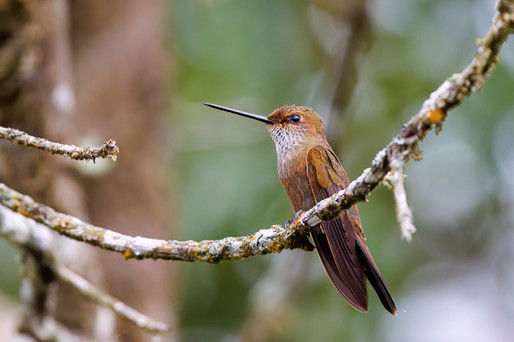



















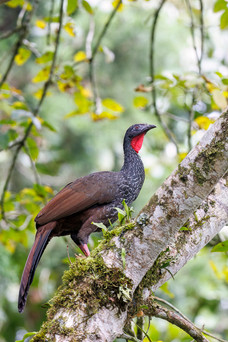













































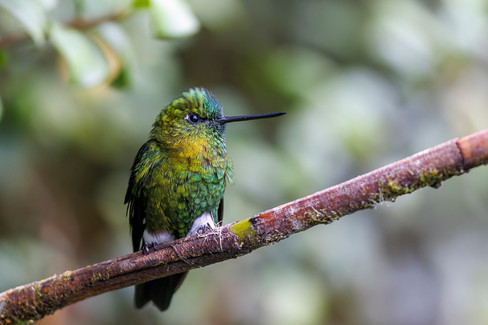



























































































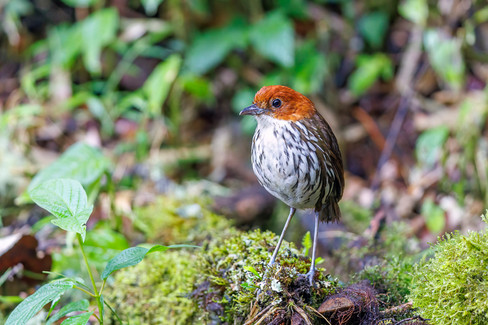









































































































































































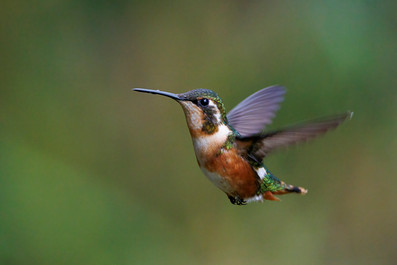























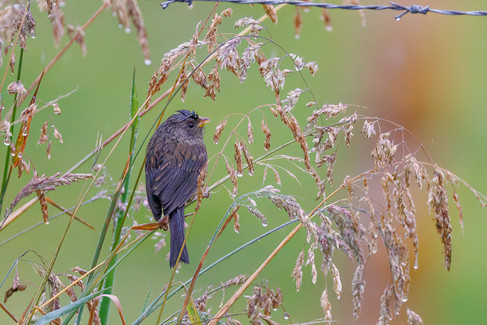






















































































Comments